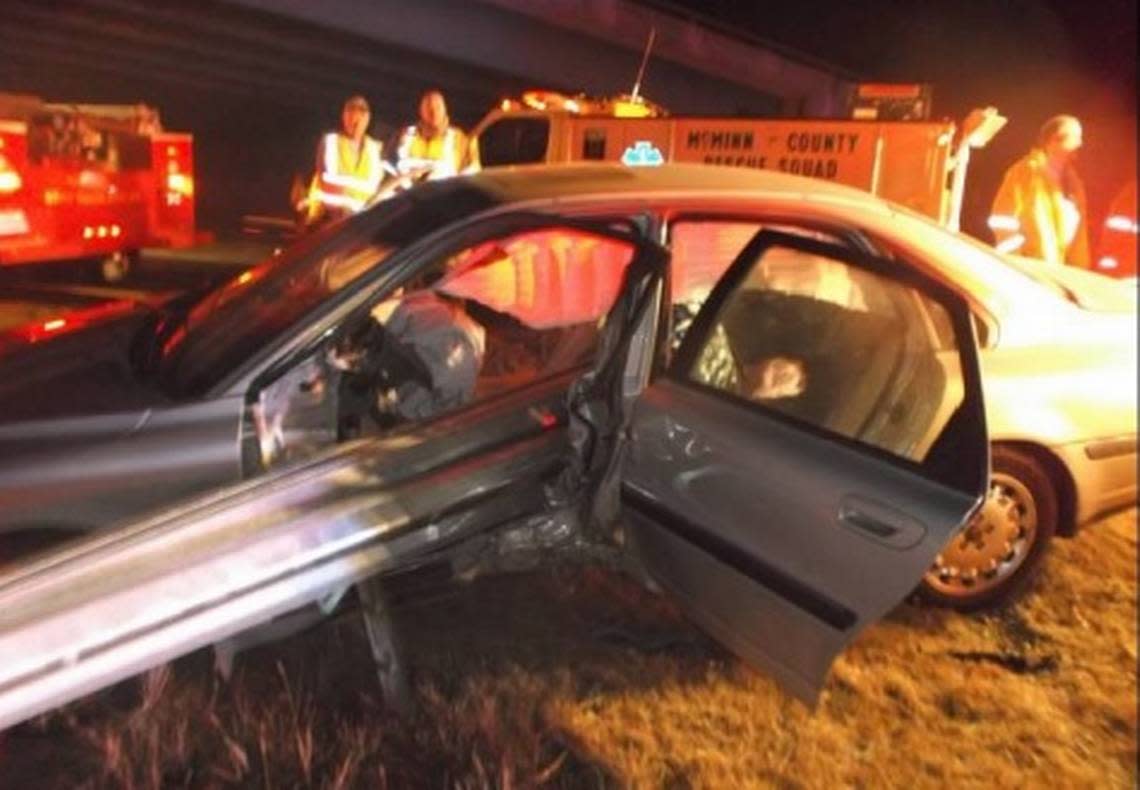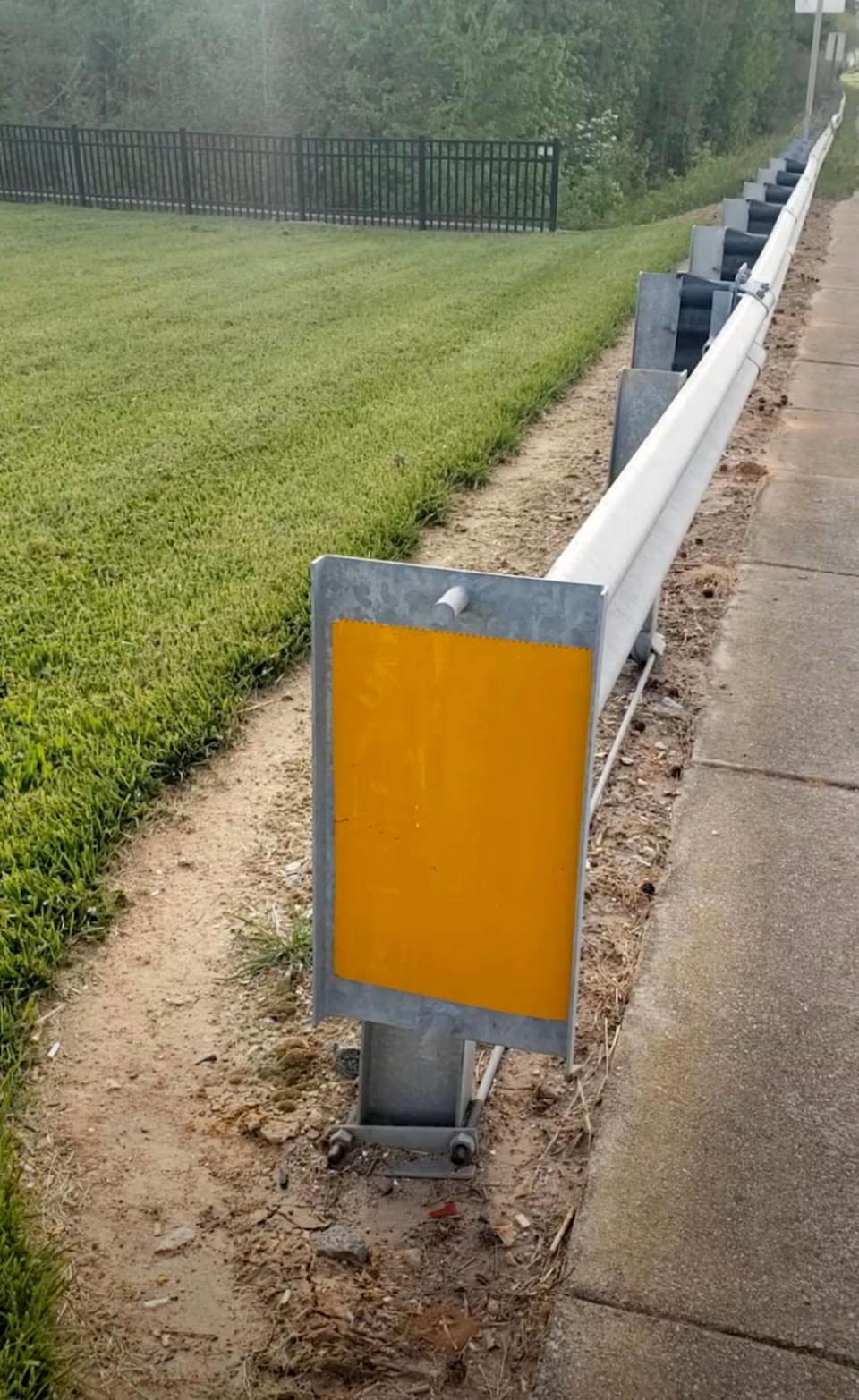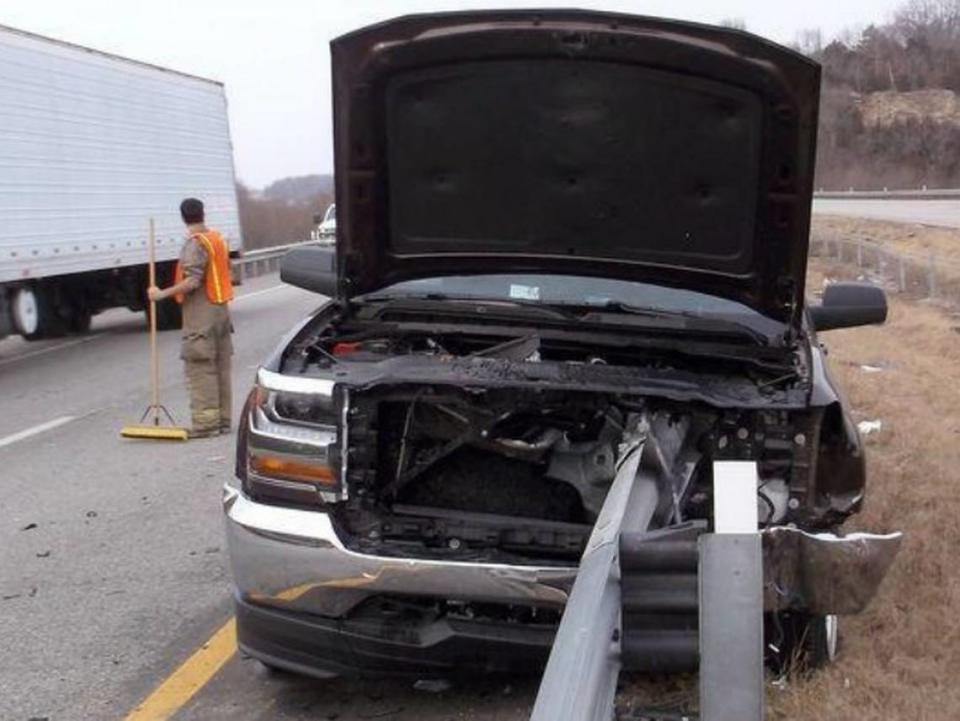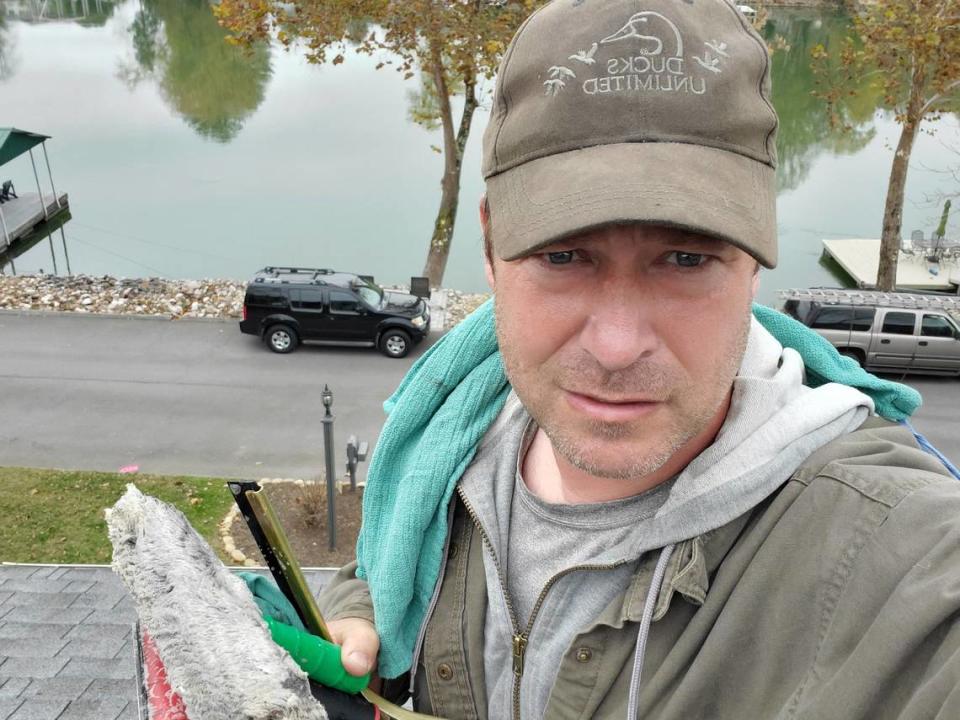A grieving father’s plea: Remove ‘instruments of death’ from NC roadsides

Early one morning in November 2016, a Volvo sedan went off the roadway on an interstate highway in eastern Tennessee.
Steve Eimers wasn’t there, but he can’t erase from his mind what happened next. The car slammed into the end of a guardrail, which speared through the driver’s side door, instantly killing his 17-year-old daughter, Hannah.
Eimers battled through months of grief. Gradually, something else began to gnaw at him: questions about why the guardrail impaled the vehicle.
He began with Google searches and asking questions about the piece of guardrail his daughter hit. The end of the guardrail — known by the model name X-Lite — was supposed to absorb or redirect the impact of a crashing car.

But in case after case, Eimers discovered, those guardrails instead pierced through vehicles, killing and seriously injuring people.
With that, Eimers began a one-man campaign to rid the nation’s highways of potentially dangerous guardrails.
In pursuit of that goal, he has driven more than 20,000 miles, traveled to more than 15 states and filed hundreds of requests for public records. He has talked to governors, U.S. senators and scores of state lawmakers.
His efforts have helped spur the removal of X-Lite guardrail end terminals in more than a dozen states.
But not North Carolina.
North Carolina is one of just nine states that have not made a commitment to replace all of their X-Lites, Eimers says. He’d like to change that.
Lindsay Transportation Solutions, the company that designed the X-Lite, says its guardrails are safe. Eimers disputes that.
“We have a product that is inherently defective. But it’s on North Carolina roadways,” Eimers said. “It’s expected to save the lives of innocent travelers. But it won’t.”

A danger alleged
The exposed ends of guardrails can be a hazard, particularly when cars hit them head on.
The X-Lite end terminal, constructed from multiple pieces of steel, was intended to telescope like the shaft of a pocket umbrella in such crashes, absorbing much of the impact. But in a number of collisions, Eimers contends, those guardrails malfunctioned.
At least 19 people nationwide have died after their cars smashed into X-Lite guardrails, the Charlotte Observer found in a review of public records and news reports. Many others were killed in crashes with other types of guardrails as well. But it’s unclear how many. No national database captures that information.
In North Carolina, six crashes into X-Lite end terminals proved fatal from 2014 through 2019, according to the latest data available from the N.C. Department of Transportation. Six other crashes into X-Lites resulted in incapacitating injuries.
Fatal crashes involving X-Lites accounted for 7.5% of deadly wrecks into guardrails on North Carolina’s primary roads, state data shows. X-Lites make up less than 4% of guardrail end terminals on those roads.
Starting in 2011, X-Lites were installed in 29 U.S. states. They are no longer put up along roadways because they are part of a previous generation of guardrails now ineligible for federal reimbursement.
States get those federal dollars only when they install guardrails that have passed the most up-to-date crash tests — assessments that use faster, heavier vehicles to mimic today’s cars. Because they were developed before the new testing guidelines were implemented, X-Lites were not subjected to the more modern tests.
But roughly 3,500 X-Lites remain on North Carolina’s roads, according to state DOT traffic engineer Kevin Lacy. Most were installed here between 2013 and 2016. In fact, this state’s large highway system has far more X-Lites than most other states, the latest available data suggests.
According to a 2017 memo by the Federal Highway Administration, 80% of the roughly 14,000 X-Lites on the roads at that time were in North Carolina and six other states. Since then, three of those states have removed all X-Lites, Eimers said.
Company, NCDOT: Terminals are safe
Lindsay Transportation Solutions notes that the Federal Highway Administration has repeatedly examined its product.
“In FHWA’s evaluations, the X-LITE performed consistently with other end terminals on U.S. roads and highways and did not lead to any conclusion that the X-Lite was unsafe,” the company said in a statement. “Numerous states have confirmed that they’ve had no negative experiences with the X-LITE.”
NCDOT is gradually replacing all older-generation guardrails when they become damaged or when roads are rebuilt, Lacy said. But the state has no plan to remove all X-Lites, which would likely cost more than $20 million, he said.

At the current rate, “it may be decades” before all X-Lites are replaced in North Carolina, Lacy said. He stressed that he doesn’t see that as a risk because data suggests the X-Lite performs in a comparable way to other guardrail end terminals.
“I have no greater concern about the X-Lite than any of the other guardrail ends on the side of the road,” he said.
Other states have come to a different conclusion, opting to replace all X-Lites with other guardrails. Tennessee removed roughly 400 X-Lites from its roads after those guardrails pierced cars, killing three motorists.
“Our data showed us we were experiencing a higher rate of failure with these,” said Paul Degges, chief engineer for the Tennessee Department of Transportation. “From a risk standpoint, we were better off removing them.”
‘Waves of grief’
Malfunctioning guardrails have devastated too many families, Eimers says. Again and again, he has reached out to grieving family members, offering information and an empathetic ear.
Gastonia resident Ladeana Gambill is among them.
Late one night in 2016, Gambill’s daughter — 21-year-Lauren Beuttel — was in a car with her step-brother, who was driving them back to eastern Tennessee after a concert in Nashville.
Suddenly, their Toyota Solara went off Interstate 40 and hit the end of a guardrail. The steel from that X-Lite end terminal speared through the car’s front fender and floor board, killing both Beuttel and Jacob Davison, her 18-year-old step-brother, according to a lawsuit filed by the victims’ families.
A recent East Tennessee State University graduate, Beuttel had been accepted to graduate school at UNC Wilmington and planned to pursue a PhD in psychology, Gambill said. Her goal was to do neuroscience research that would help improve mental health treatment.

More than five years after the crash, Gambill still makes her daughter’s favorite Oreo dessert on her birthday.
“It’s been very difficult,” Gambill said, her voice quavering. “Just not having her here for holidays and birthdays. All these things we’re missing out on … The waves of grief — you never know when they’re going to hit.”
Before the collision, Gambill never thought much about guardrails. Now, however, she says she can’t drive anywhere without seeing them and wondering if they will function properly.
“The drive becomes stressful because we’re always aware of these things,” she said.
Beuttel’s family members sued the X-Lite’s makers, a case that ended in a confidential settlement. Under that agreement, the family is not allowed to discuss the company, its product or the terms of the settlement.
Lawsuits allege X-Lites malfunctioned
In a 2017 memo, the Federal Highway Administration said an evaluation of crashes involving various kinds of guardrail end terminals “does not lead to any conclusions that any of the devices, including the Lindsay X-LITE, are unsafe.”
But data collected from test sites in four states suggests that injuries and deaths aren’t uncommon when cars crash into the ends of guardrails. Of 111 wrecks involving the X-Lite, 17 led to serious injuries and five resulted in deaths.
The percentage of fatal crashes was higher for the X-Lite, the target of Eimers’ activism, than for six of nine other guardrails struck by cars.
Injuries and deaths from X-Lite crashes have led to at least 10 lawsuits nationally, according to Poorad Razavi, a Florida lawyer who has represented families in a number of those complaints. The number of lawsuits related to all guardrail crashes is not known.
Eimers is among those who’ve sued Lindsay. In an answer to that lawsuit, Lindsay denied Eimer’s allegations and said it believes another company manufactured the guardrail that was struck by his daughter’s car. Eimers contends there’s no doubt Lindsay designed that guardrail.
The Missouri Highways and Transportation Commission also sued Lindsay last year, contending that the X-Lite has malfunctioned in ways that increase the risk of serious injury and death. That pending lawsuit also alleges that X-Lite’s manufacturers “concealed or misrepresented the results of testing ... which showed that the X-Lite system was defective.”

The company cannot discuss pending litigation, a Lindsay spokesperson said.
The federal government has relied heavily on private testing labs to assess guardrail safety. But a watchdog agency has raised questions about the independence of those tests. Six out of nine accredited U.S. crash test laboratories evaluated products developed by their parent companies, a 2016 federal study found. The report, by the U.S. Government Accountability Office, called that “a potential threat to lab independence.”
The lab that tested the X-Lite is owned by Lindsay Transportation Solutions, the guardrail’s maker, the USA Network reported in 2017.
Troubled by such problems, Eimers recently worked with federal lawmakers to push for changes. A provision included in the $1.2 trillion infrastructure bill, which President Biden signed into law in November, now requires third-party verification for crash testing on guardrails.
Not giving up on NC
Now 45 and living outside Knoxville, Eimers once enjoyed a simpler life. He spent much of his time with his window cleaning business, his wife and his adopted and biological children.
Hannah, the oldest of the 10 kids, spoke several languages, got her high school diploma at age 15, and was pursuing a career in film. Her heart was as big as her mind, her father said. Through her church, she helped children with Down Syndrome and children who were deaf, even learning sign language so she could communicate with them.
“She saw the need and ran toward the need,” said Eimers, who choked up as he talked about her.
On Nov. 1, 2016, she was driving to school in a 2000 Volvo S80 — a car that her Dad had chosen for her because it was “extraordinarily safe.”
Then came the crash.
Since then, Eimers estimates that he has spent more than 10,000 hours on his highway safety campaign.
“This has dominated my life,” he said. “It has become a little bit of an obsession.”

Hoping to make President Trump aware of his safety concerns, Eimers spent $1,000 to air a local TV ad in Florida before the 2018 Super Bowl.
He has made more than a dozen trips to North Carolina, where he pulled over on road shoulders to inspect more than 200 X-Lites. He concluded that virtually all of them were either damaged or improperly installed. In many cases, he maintains, the results could be deadly.
He has made more than 100 calls to DOT officials, lawmakers and other public officials here. And he has written detailed letters to Gov. Roy Cooper, pleading for his help in removing what he calls “these instruments of death.”
North Carolina officials, he contends, have done far too little.
But Eimers won’t stop pushing them.
“I don’t want to have to talk to another one of these families,” he said. “I don’t want them to live the horror.”

